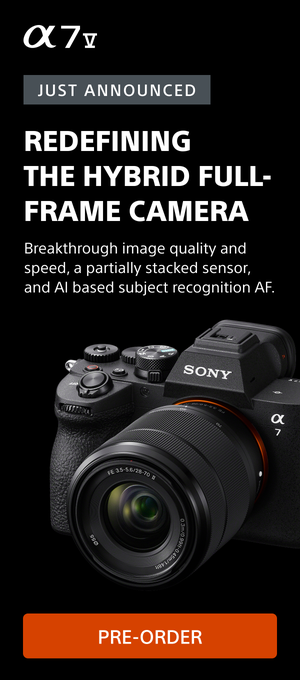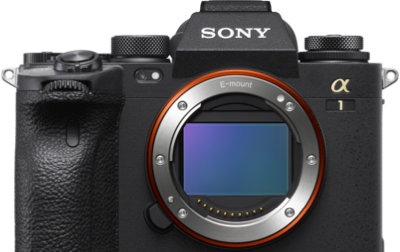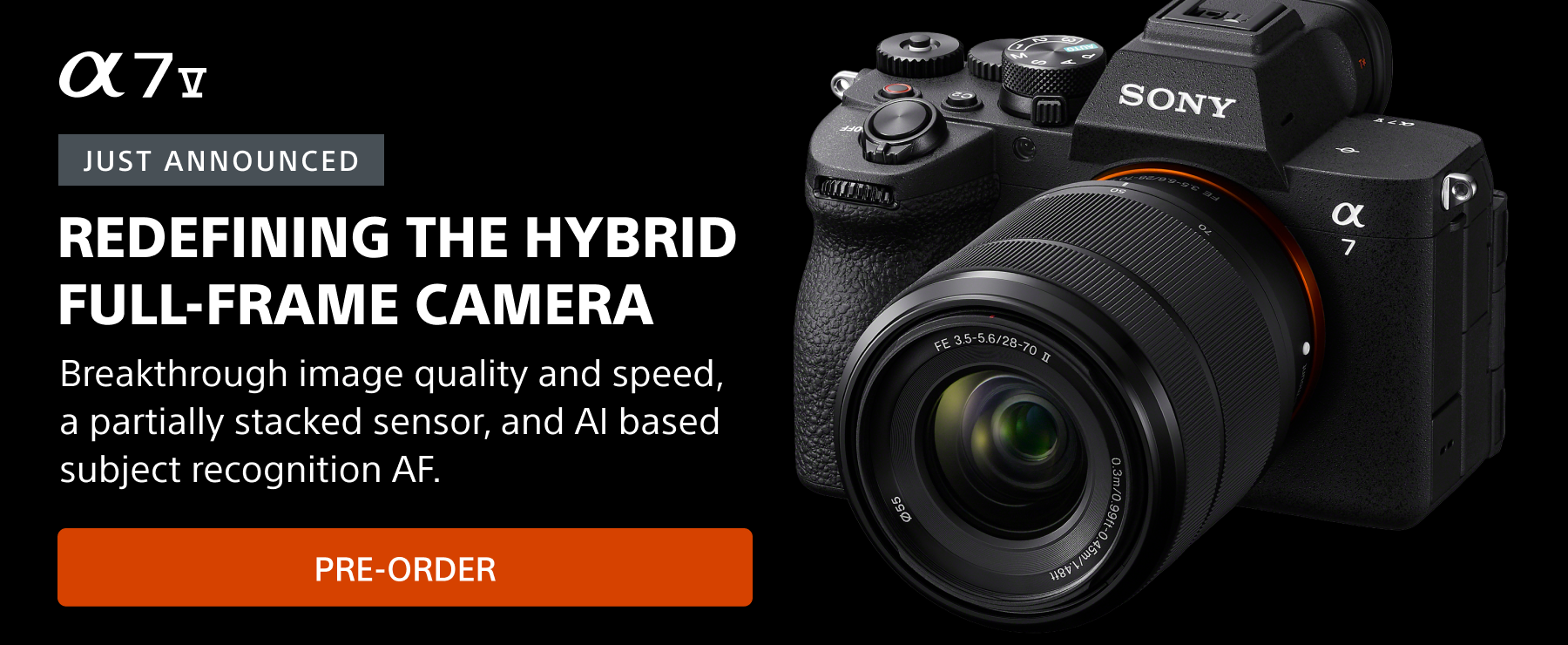Cuba is opening up and for American photographers, now is a time to plan a trip, camera in hand, to see the country and the people before the inevitable changes take place in the country. It's not like Cuba hasn't had tourism and foreigners for decades--after all, the US embargo wasn't a global embargo--but as relations open up between the US and the communist island nation, things are likely to change..rapidly. Siny Artisan Brian Matiash had a chance to travel to Cuba in early 2016 and he returned with some fantastic imagery and some excellent tips for photographers who want to have their own Cuba adventure. -AlphaUniverse.com

I’ve spent a lot of time reflecting on my recent trip to Cuba. While there, I did my best to capture my thoughts as they happened and will share them in separate posts. For now, though, I’d like to share this list of photo tips to consider if you find yourself with the wonderful opportunity to visit Cuba. These are the very same things I kept in the forefront of my mind every time I left my casa particular with the intent to photograph. It’s also important to note that a lot of these tips aren’t exclusive to Cuba and can be applied to street and travel photography all over the world. So with that, let’s get cracking.
CONSIDER DITCHING THE NECK STRAP
I know, I know. A neck strap is often regarded as a support system for some photographers even beyond the obvious protection it provides. There is a certain comfort afforded with having your camera dangling around your neck or off one shoulder. However, it’s also worth considering what your objective is. My primary goal while walking around Havana and Trinidad was to capture life as it happened, to get out of the way and be a silent observer. Having a camera bobbing up and down off of my neck doesn’t aid much in keeping that obscurity. It’s something I witnessed countless times by some of my fellow photographers who joined me on the trip. They’d walk down a random street and as they passed by, everyone stopped what they were doing when they saw a big camera hanging down.
It’s worth making the point that I am not against straps. Quite the contrary, actually. I love my Slide strap, made by the wonderful folks at Peak Design. I use it very often when it’s appropriate. However, when it comes to discreet street photography, I like keeping my approach to how I handle my camera very simple. The only accessory I use with my camera is a hand strap called the Clutch, also made by Peak Design. This hand strap allows me to securely hold my camera without worrying about accidentally letting go of it. So, as I’m walking down the street, I usually have my arm down and my camera resting against my leg or just behind me. Now, instead of focusing on where my camera is, I can concentrate on simply looking at the world unravel right in front of me. When I see a moment of interest, there is no fumbling to grab my camera because it’s already in my hand. I just lift it, compose, and fire. And for those times when I need a break from holding my camera, I just clip my camera to the side of my Everyday Messenger Bag using the CapturePro clip, both products also by Peak Design (I’m a huge fan of Peak Design’s products, if you couldn’t tell by now).
EXPERIMENT WITH DIFFERENT FOCAL LENGTHS
Here’s the thing. In my experience, photographers tend to gravitate towards the wider end of the focal length spectrum… usually hovering between the 16-24mm range. This is a wonderful range if you’re aim is to capture environmental portraits—a person or people and their natural element. The flip side to that is it becomes difficult sometimes to separate the person from the rest of the scene because so much is being included within the frame. That’s why it’s so important to experiment with longer focal length, somewhere between 70-100mm. Aside from the benefits of lens compression, you also gain a wonderful way to bring direct focus to your subject. It becomes much easier to separate your subject from the rest of the scene.
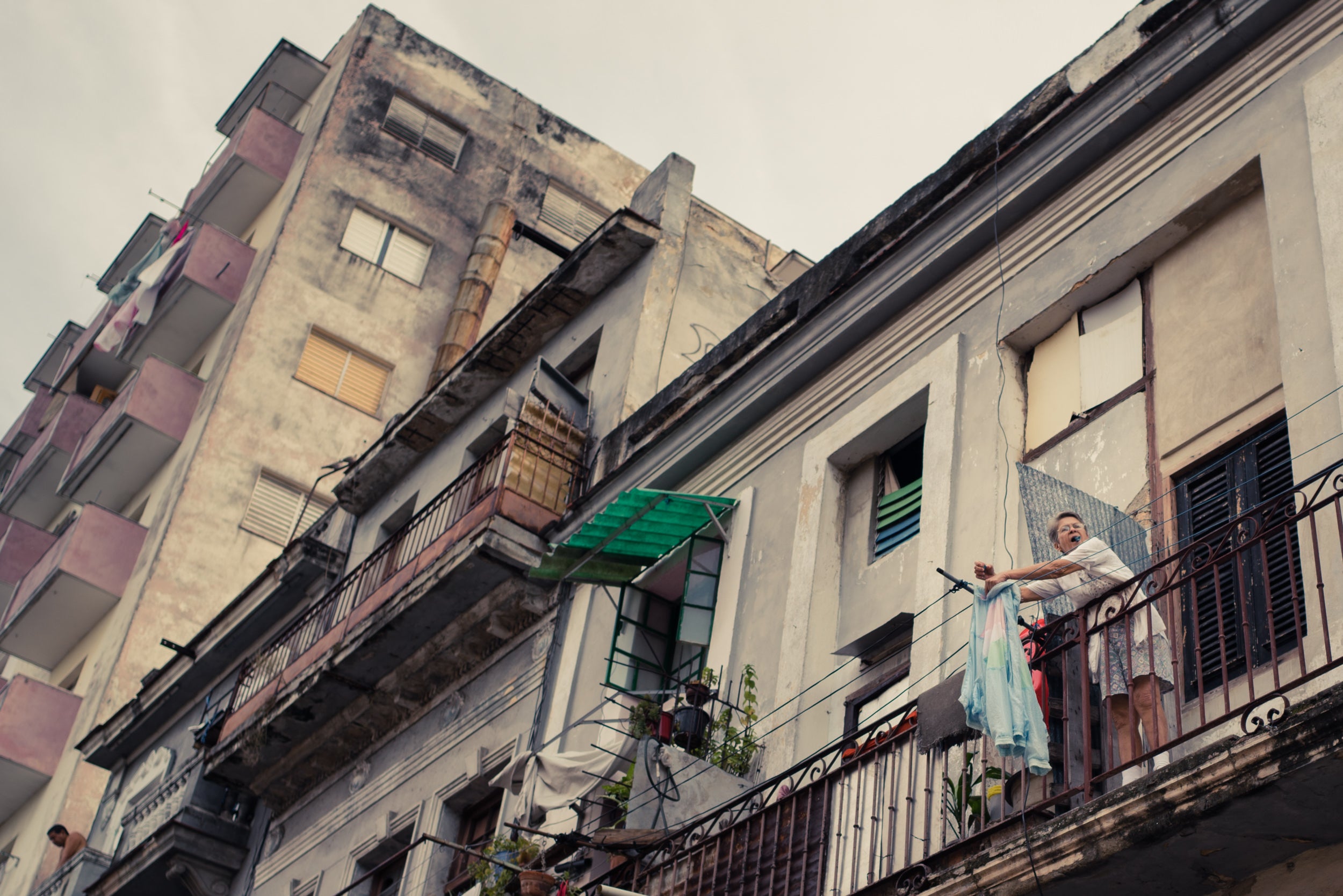

Using longer focal lengths was especially important while in Havana and Trinidad because of how busy the streets were. In addition to the streets teeming with people, there were chaotic spiderwebs of electrical and telecommunications wires strewn everywhere. All of this made it very challenging to isolate a particular person engaged in a particular moment. It wasn’t impossible to do with a wide angle lens but I certainly preferred the opportunities that presented themselves when I used a longer focal length.
EXPERIMENT WITH DIFFERENT ANGLES
There’s no denying the obvious pull to capture a person head-on. In other words, you’re facing them and they’re facing your camera lens. If I had to guess, I’d say that the bulk of portrait photos that I’ve ever seen have been taken head-on. In my experience, though, the primary downside to this direct perspective is that you’ve likely made your presence known to your subject. It’s hard to overlook the business end of a lens when it’s pointed right at you. Now, if your aim is to capture the essence of this person while they’re aware of it, then play on. However, I’d also ask you to consider your position relative to your subject.

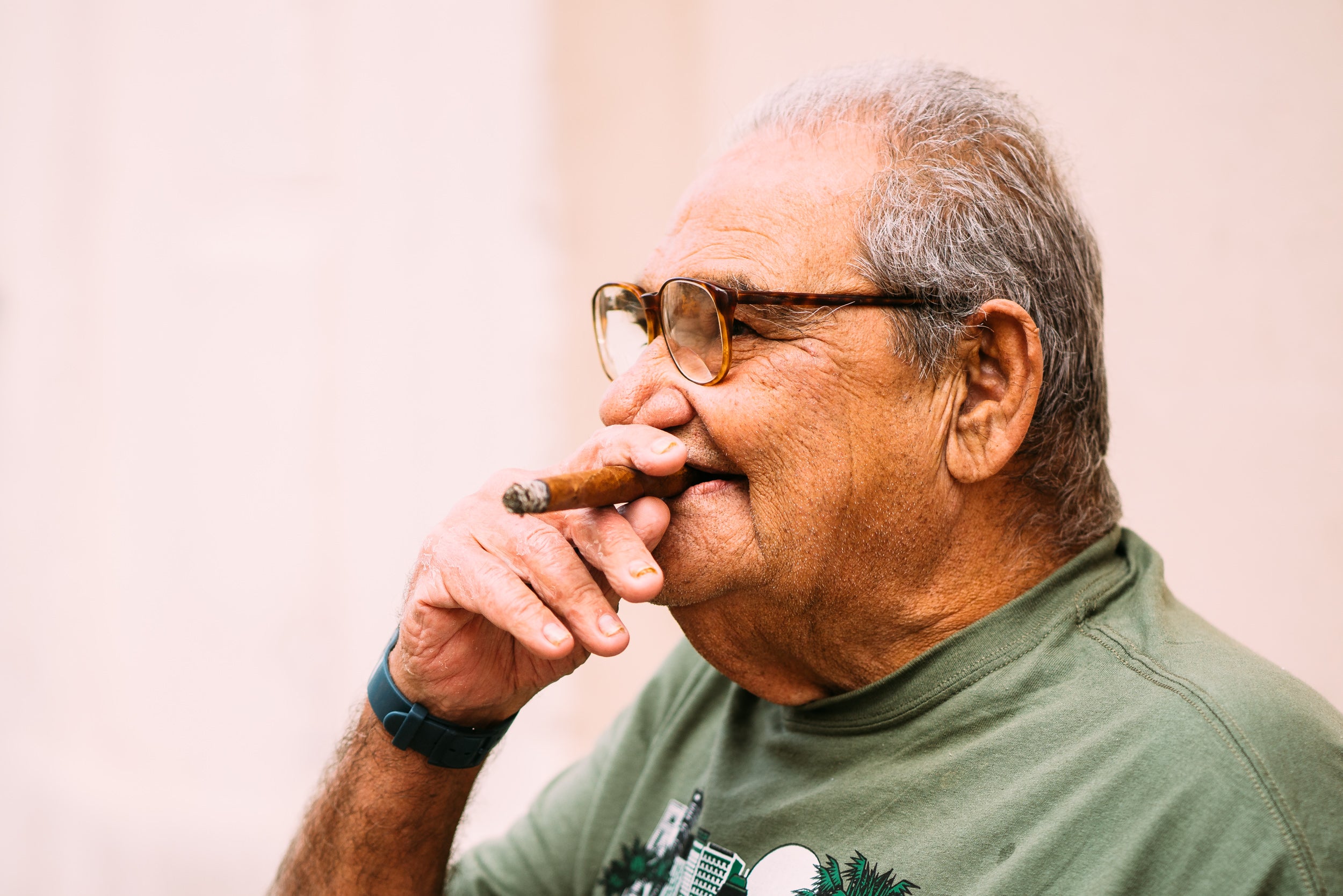
 Whenever I found myself walking down some street in Cuba with the rest of the photography group I was with, I noticed that almost all of them would default to positioning themselves right in front of a subject. Aside from this leading to a bunch of similar photos being taken by several photographers, it also destroyed any chance of being able to observe life unfold naturally for the locals (and the photographers). My MO was to capture a person simply living, blissfully unaware of my existence, and I found great success when I considered different vantage point and perspectives. Aside from the obvious invisibility that you can afford yourself, you further open up a bunch of different compositional options as it relates to angles, leading lines, and vanishing points. Still, I’d be remiss if I didn’t express that there certainly are benefits to head-on portraits. In my book, though, taking a head-on portrait should include some sort of context to help bring the photo to life for the viewer.
Whenever I found myself walking down some street in Cuba with the rest of the photography group I was with, I noticed that almost all of them would default to positioning themselves right in front of a subject. Aside from this leading to a bunch of similar photos being taken by several photographers, it also destroyed any chance of being able to observe life unfold naturally for the locals (and the photographers). My MO was to capture a person simply living, blissfully unaware of my existence, and I found great success when I considered different vantage point and perspectives. Aside from the obvious invisibility that you can afford yourself, you further open up a bunch of different compositional options as it relates to angles, leading lines, and vanishing points. Still, I’d be remiss if I didn’t express that there certainly are benefits to head-on portraits. In my book, though, taking a head-on portrait should include some sort of context to help bring the photo to life for the viewer.
WORK THROUGH THE LANGUAGE BARRIER
A lot of what I’ve written thus far may flavor my recommendations towards not interacting with the people but that couldn’t be farther from my intent. In fact, some of the most rewarding and enriching experiences from Cuba were gained specifically through my interactions with her local denizens, so please do not rob yourself of the wonderful experience of communicating, or at least attempting to communicate with the people around you.
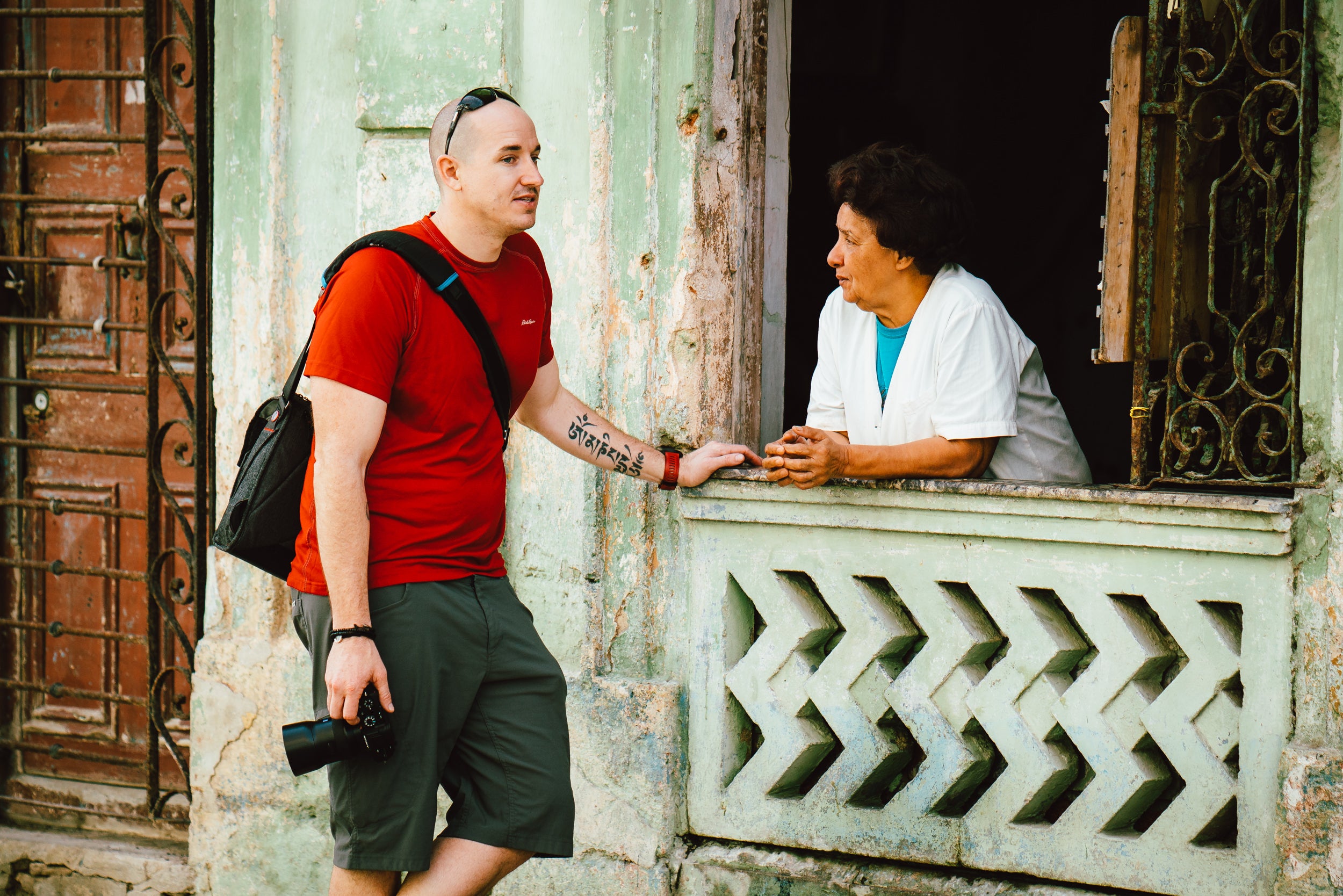 Right off the bat, this tip probably doesn’t apply if you’re already fluent in the native language of the country you’re visiting. In the case with Cuba, that language is Spanish. However, even if you’re very comfortable with the language, there are a number of regional dialects, idioms, and accents that can still make conversing somewhat challenging. I have a very cursory and broken grasp of the Spanish language. Basically, whatever my brain can muster up from my high school days of Spanish class is what I’m working with now. Fortunately, it was enough to let me communicate—often comically—with other people.
Right off the bat, this tip probably doesn’t apply if you’re already fluent in the native language of the country you’re visiting. In the case with Cuba, that language is Spanish. However, even if you’re very comfortable with the language, there are a number of regional dialects, idioms, and accents that can still make conversing somewhat challenging. I have a very cursory and broken grasp of the Spanish language. Basically, whatever my brain can muster up from my high school days of Spanish class is what I’m working with now. Fortunately, it was enough to let me communicate—often comically—with other people.
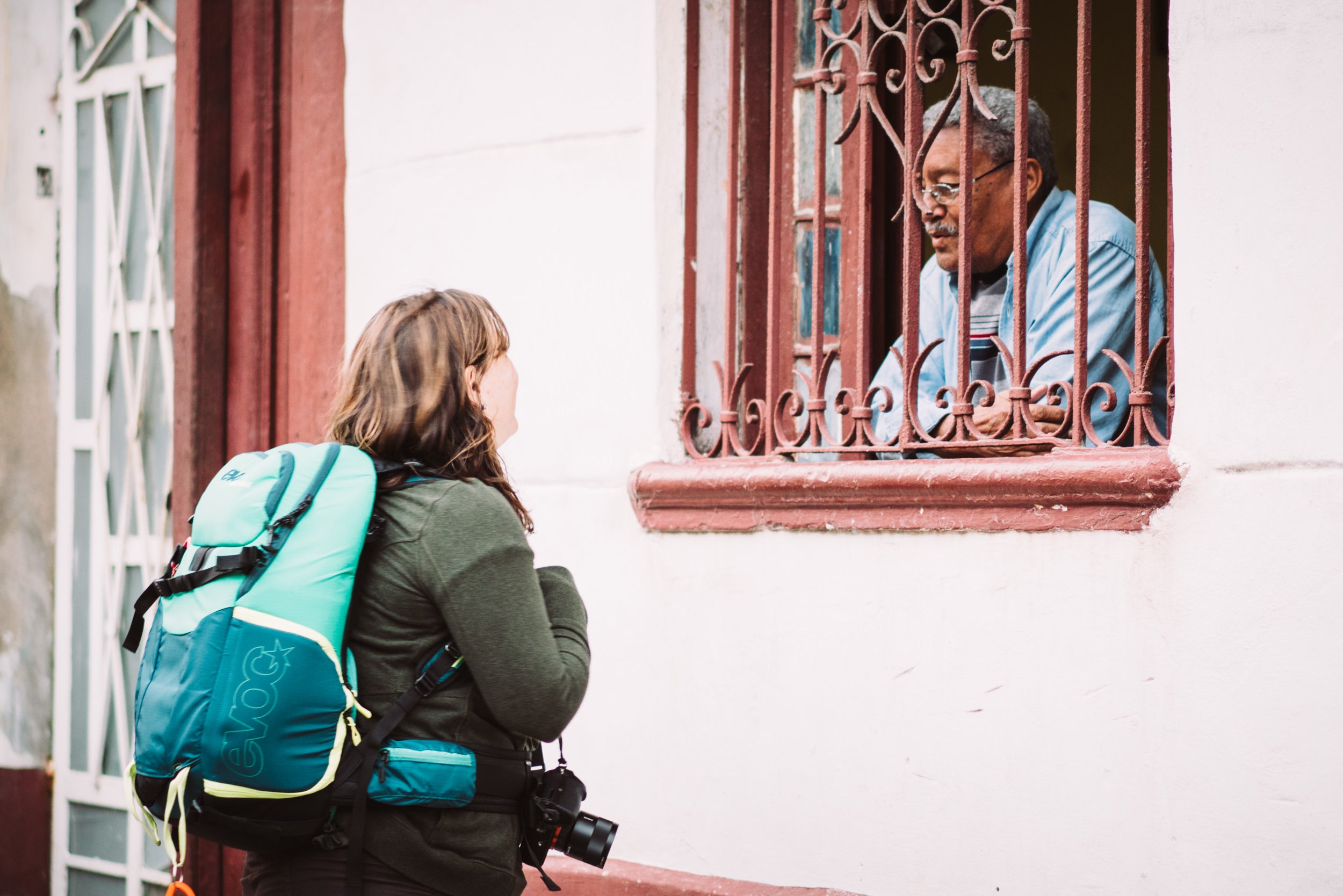 There are a slew of reasons—many very obvious—as to why being able to communicate is so important. Maybe you need to ask where the nearest bathroom is (¿dónde está el baño?) or you need to ask how much that bottle of water is (¿Cuánto cuesta una botella de aqua?). And—probably most applicable—you’d like to ask that genial old lady if it’s ok to take her picture (Perdóname. ¿Puedo tomar su foto?) In my experience with trying to strike up a conversation with Cuban people, they were all exceptionally gracious and accommodating to help bridge the gap in language. In fact, there were many cases where the person I was speaking with tried their hand at English and suddenly, we were having a conversation! In some cases, I never even tried lifting my camera. I’d begin with a smile and a simple ¡Hola amigo! or Buenos días or my friend Betsy’s new favorite, “¿Como va la cosa?”. The next thing I knew, we were talking about politics (always an adventure), their job, or their family. By the end, asking to take their picture was super easy and a mutual pleasure. Which leads me to my next tip…
There are a slew of reasons—many very obvious—as to why being able to communicate is so important. Maybe you need to ask where the nearest bathroom is (¿dónde está el baño?) or you need to ask how much that bottle of water is (¿Cuánto cuesta una botella de aqua?). And—probably most applicable—you’d like to ask that genial old lady if it’s ok to take her picture (Perdóname. ¿Puedo tomar su foto?) In my experience with trying to strike up a conversation with Cuban people, they were all exceptionally gracious and accommodating to help bridge the gap in language. In fact, there were many cases where the person I was speaking with tried their hand at English and suddenly, we were having a conversation! In some cases, I never even tried lifting my camera. I’d begin with a smile and a simple ¡Hola amigo! or Buenos días or my friend Betsy’s new favorite, “¿Como va la cosa?”. The next thing I knew, we were talking about politics (always an adventure), their job, or their family. By the end, asking to take their picture was super easy and a mutual pleasure. Which leads me to my next tip…
SHOW THE PHOTO AFTER YOU’VE TAKEN IT
Taking someone’s photo can be a very nerve-racking experience, especially for the subject and especially if your subject catches you sneaking a photo of them. Imagine the scenario where a local is standing outside of his house, living his life when, out of nowhere, some total stranger points a camera at them, takes a photo, and then walks away. You can imagine the range of emotions this person could be feeling, which is why engaging them in conversation is so important. However, I also understand that there are many circumstances that could prevent you from having that opportunity before you take the photo. Maybe the moment would have been altered or lost altogether.
This is where showing the photo to your subject after you’ve taken it can go such a long way. Calmly approach the person, graciously thank them (muchas gracias) and then show them the photo on the back of your LCD. You’ll probably get bonus points for showering them with compliments like “how handsome!” (¡que guapo!) or “how pretty!” (¡que bonita!). More likely than not, you’ll elicit a laugh out of them and, most importantly, you’ll reinforce that having their picture taken by a total stranger can be a positive experience. In a way, you’re paying it forward for all the future photographers who walk in your footsteps.
Now, if you want to go the extra mile to put a huge smile on your subject’s face, you can do what fellow photographer Matt Conti did. He brought one of those Fuji Instax printers that allowed him to wirelessly print little polaroid exposures to give out almost immediately. Seeing the smiles (and tears!) that appeared on the subjects’ faces was something else. I’m definitely bringing one on my next trip.
HAVE A POCKETFUL OF SMALL BILLS OR CHANGE
Without going into too much detail, it’s safe to say that just about every single Cuban citizen I met lived in impoverished conditions. Now, I know that the ideal of a Socialist regime should prevent such things but reality almost always operates on a different plane than the ideal and Cuba is no exception (far from it!)l. On average, each person earns approximately $40/month, which is almost unimaginably challenging to live off of.
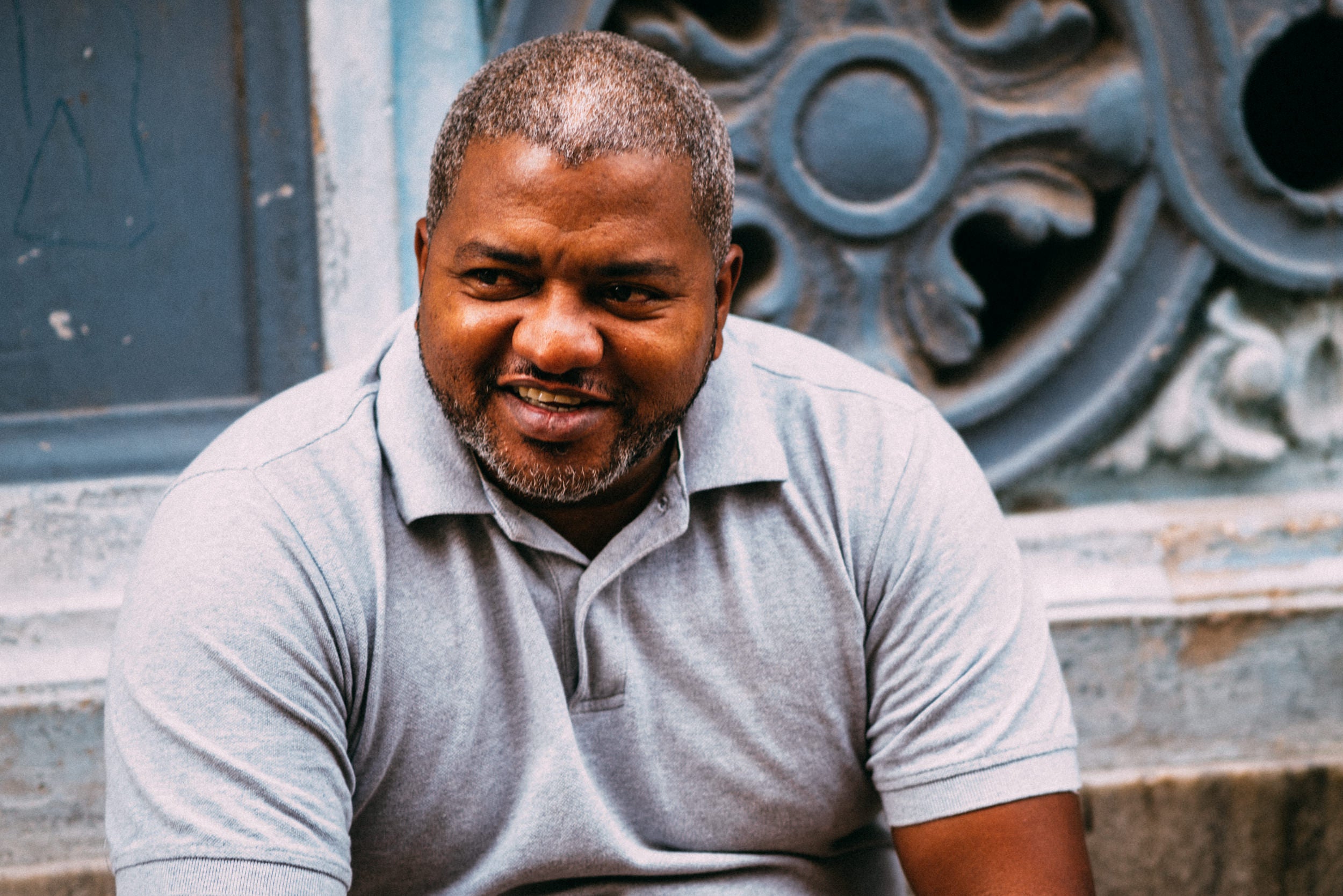 I can’t begin to count the number of times I was solicited by a total stranger for some money. This was especially true in the touristy parts of Havana and almost throughout all of Trinidad. I admit that by the end of my stay, I was mostly desensitized to solicitors and had no problem simply saying that I had no money to give (Lo siento. No tengo nada de dinero). It’s not that I am opposed to helping someone by giving them spare change or small bills. I simply prefer to trade an experience for my money.
I can’t begin to count the number of times I was solicited by a total stranger for some money. This was especially true in the touristy parts of Havana and almost throughout all of Trinidad. I admit that by the end of my stay, I was mostly desensitized to solicitors and had no problem simply saying that I had no money to give (Lo siento. No tengo nada de dinero). It’s not that I am opposed to helping someone by giving them spare change or small bills. I simply prefer to trade an experience for my money.
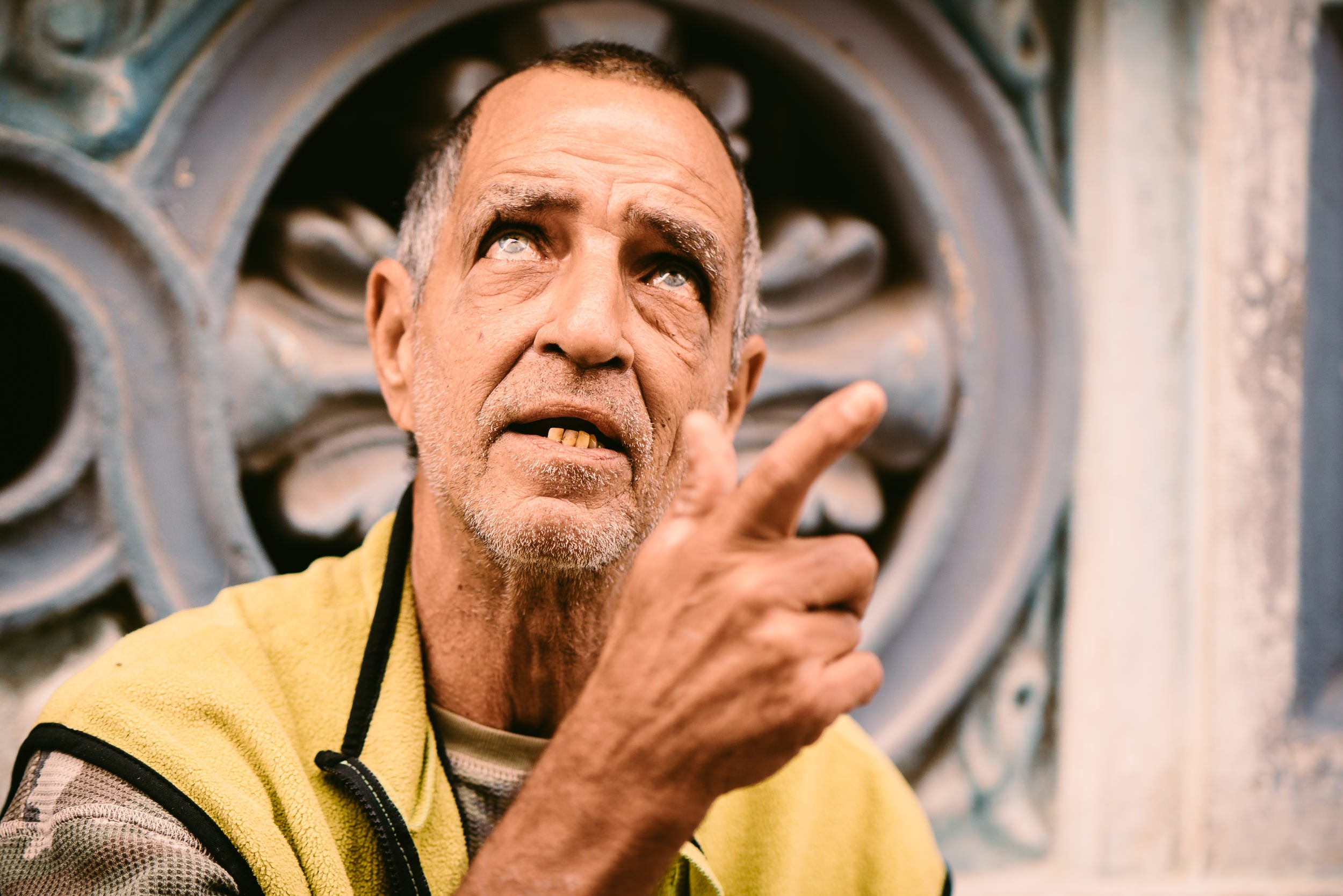 For example, on one of the first days that the group meandered around Old Havana, we came upon three men (two of whom are pictured above) sitting on the side of a building and we all started chatting. After a few minutes, there had to be 10 of us—three Cubans and seven Americans—conversing about a wide range of topics. The experience was wonderful! We laughed and talked about how terrified we all were of the upcoming presidential elections. We learned about how happy they were to see more Americans visiting them. And, naturally, we took a bunch of photos. In short, we bonded. When we were done, all of us instinctively and collectively put together a small pile of bills to give to them. It was our way of showing our appreciation in the most powerful way we could. Since that encounter, I repeated this transaction of sorts with anyone who I gained an experience with and I couldn’t have been happier to do so.
For example, on one of the first days that the group meandered around Old Havana, we came upon three men (two of whom are pictured above) sitting on the side of a building and we all started chatting. After a few minutes, there had to be 10 of us—three Cubans and seven Americans—conversing about a wide range of topics. The experience was wonderful! We laughed and talked about how terrified we all were of the upcoming presidential elections. We learned about how happy they were to see more Americans visiting them. And, naturally, we took a bunch of photos. In short, we bonded. When we were done, all of us instinctively and collectively put together a small pile of bills to give to them. It was our way of showing our appreciation in the most powerful way we could. Since that encounter, I repeated this transaction of sorts with anyone who I gained an experience with and I couldn’t have been happier to do so.
SO THERE YOU HAVE IT!
Traveling to new countries can be both nerve-racking and utterly rewarding. If there’s one thing that keeps being reinforced as so important throughout my travels, it is the establishment of the human connection regardless of language, culture, or social status. When I forget that, all I need to do is put myself in the other person’s shoes. Reality can set in very quickly at that point and from that awareness breeds appreciation, compassion, and a thirst to understand more. I hope these tips help prepare you for your own travels to Cuba or anywhere else in the world. Be sure to let me know your thoughts in the comments section!
